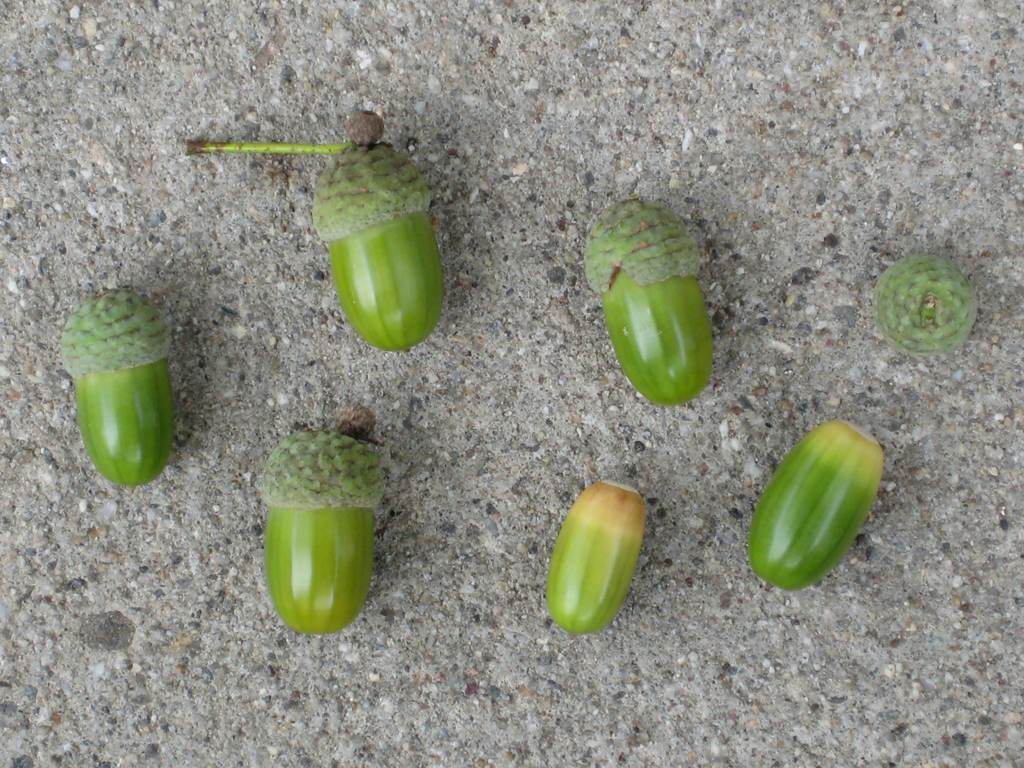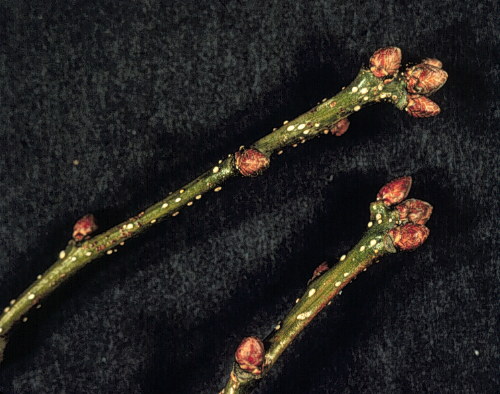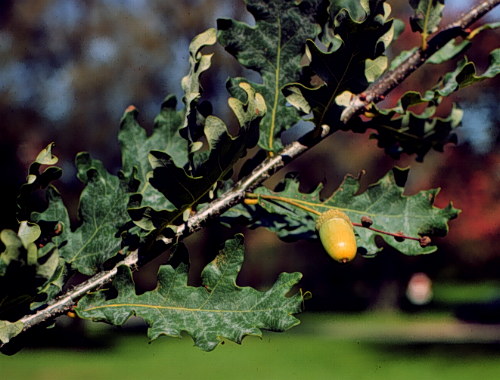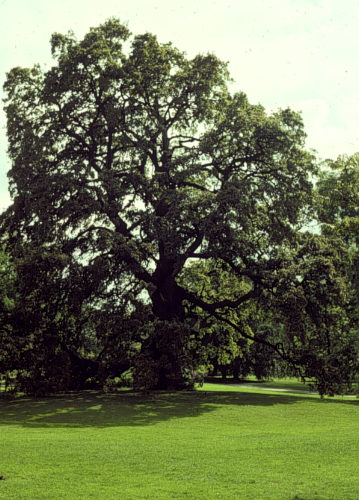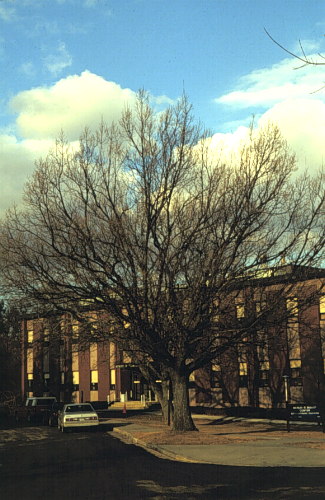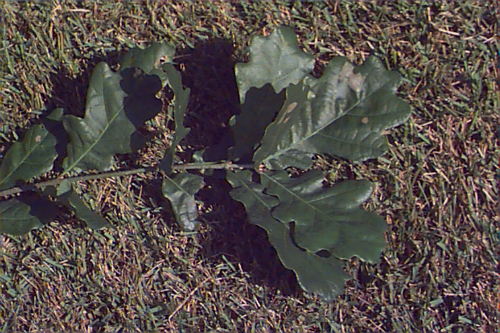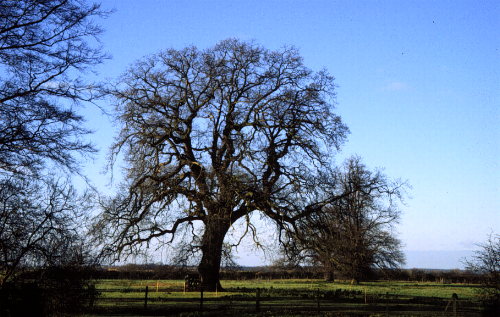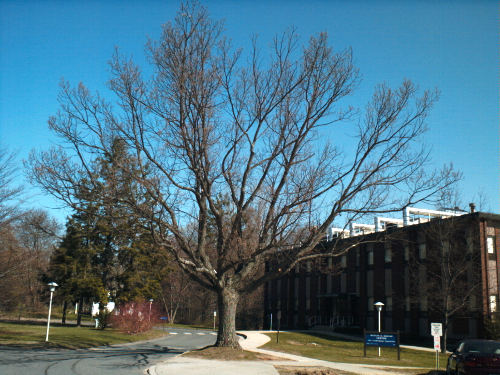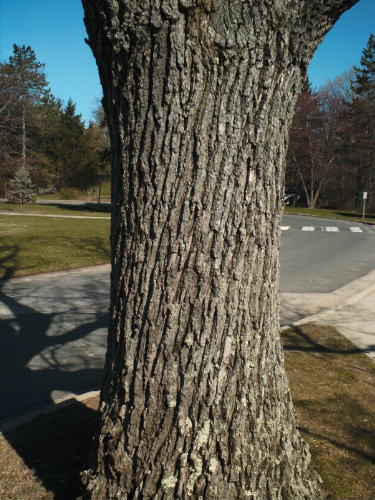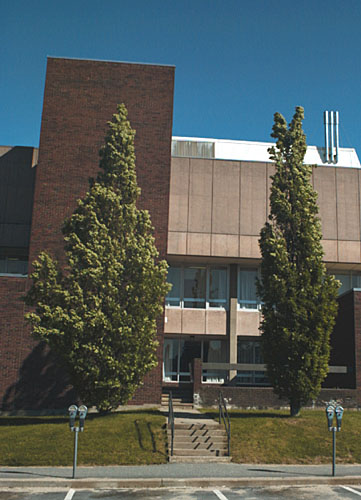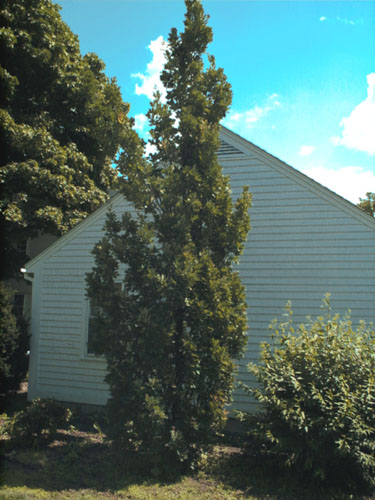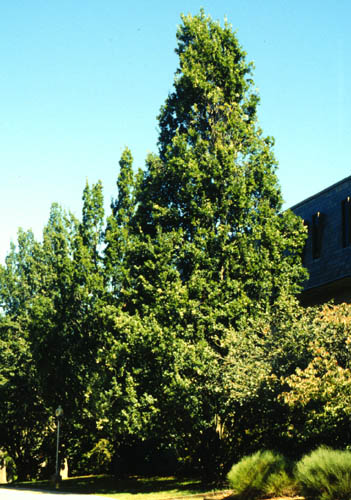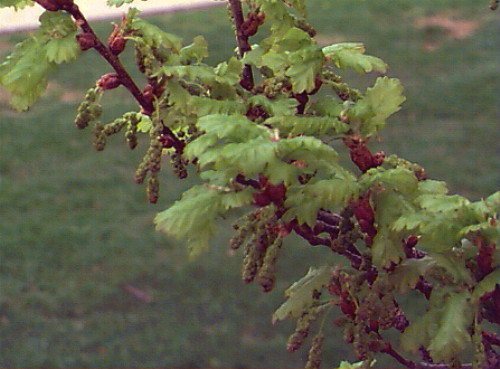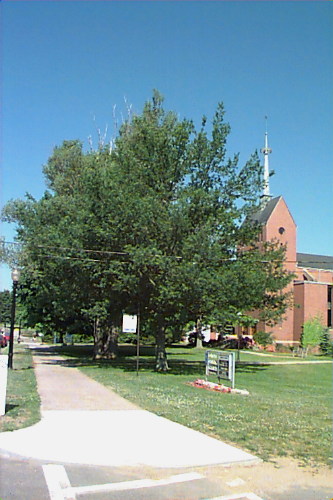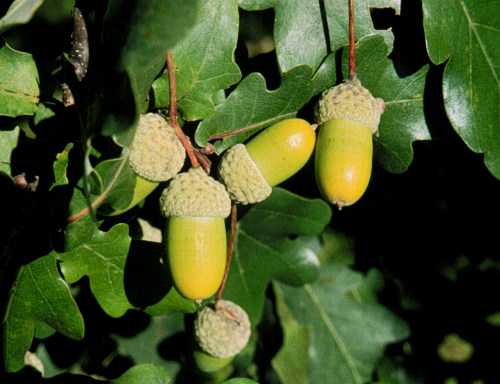Quercus robur
English Oak
Fagaceae
ExpandHabitat
- native to Europe, northern Africa and western Asia
- zone 5
Habit and Form
- a large, deciduous, shade tree
- most trees reach a maximum of 50' to 70' tall
- develops a rounded and broad crown
- branching is upright and spreading
- old trees can have irregular branching
- young trees are typically pyramidal or have an ovate shape
Summer Foliage
- alternate leaf arrangement
- relatively small leaves for an oak
- 2" to 5" long
- 6 to 14 shallow, rounded lobes
- color is dark green, olive green or blue-green
- leaf base is ear-shaped or auriculate
Autumn Foliage
- leaves remain green late into autumn
- leaves drop green or turn brown and persist into winter
- autumn effect is poor
Flowers
- monoecious
- male flowers are yellow-green catkins
Fruit
- small elongated acorns
- 0.4" to 0.6" across
- 0.6" to 1" long
- borne singly or in clusters up to five
- mature in one season (white oak group)
Bark
- furrows and ridges
- gray-black color
Culture
- full sun
- moist, fertile well-drained soil preferred
- soil pH is not critical
Landscape Use
- shade tree
- lawn tree
- needs room to develop
Liabilities
- twig or branch kill severe winters
- powdery mildew
- species is not suitable for small yards
- hard to locate species in commerce
ID Features
- auriculate leaf base
- small leaves with very rounded lobes
- twigs somewhat greenish
Propagation
- by seed
- cultivars are grafted
Cultivars/Varieties
'Autropurpurea' - The leaves of this form emerge reddish-brown and mature to a more green color. It is slower-growing with smaller leaves, reaching a mature size of perhaps 30' tall.
'Concordia' - An old selection, this plant features leaves that emerge bright yellow, but then mature to green. It is otherwise similar to the species.
'Fastigiata' (also listed as var. fastigiata) - Perhaps the most common oak cultivar, this selection is more common than the species in the United States. It grows narrow and upright and is slow growing. The plant may reach upwards of 50' tall with a spread of only 10' to 15'. As this useful plant is susceptible to mildew, recent research has focused on the development of disease-free hybrids. Refer to listings under Q. bicolor and Q. macrocarpa for descriptions of some of the initial introductions. 'Skyrocket' is a newer fastigiate form with uniform habit and quality dark green foliage. This selection appears to be highly-resistant to the mildew that plaques this species, especially in warmer climates.
'Filicifolia' (also known as 'Asplenifolia') - The leaves of this small rounded tree are distinctly incised and cut for a fine-textured, ferny appearance. It is slow-growing and not offered frequently. 'Salicifolia' has elliptic un-lobed leaves that resemble a willow. It is a small rounded tree that grows to 30' tall.
'Michround' (Westminster Globeâ„¢) - This is a rounded, pyramidal tree that grows to 50' tall and wide with dark green leaves. It appears to perform best in colder climates.
'Pendula' - An umbrella term for various weeping clones, this selection is nonetheless rare in commerce. It features vigorous long branches that arch and may be trained.
'Pyramich' (Skymasterâ„¢) - This selection becomes pyramidal with widely diverging branches to 50' tall and 25' wide. The foliage may not hold up well in hot, humid climates.
'Variegata' - Various clones are included under this moniker, most of which are weaker-growing trees with foliage variously marked or mottled with white. They are occasionally offered by specialty nurseries.
